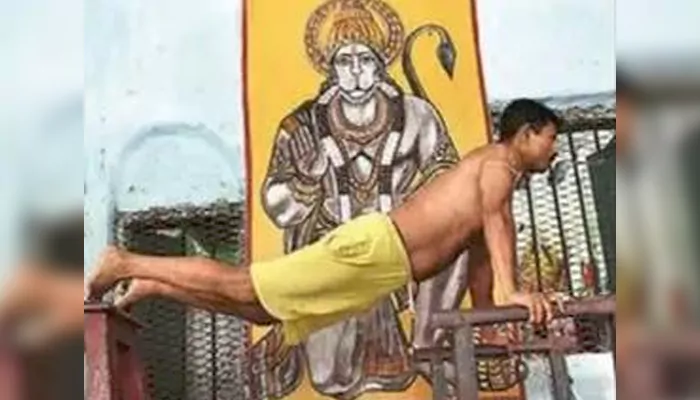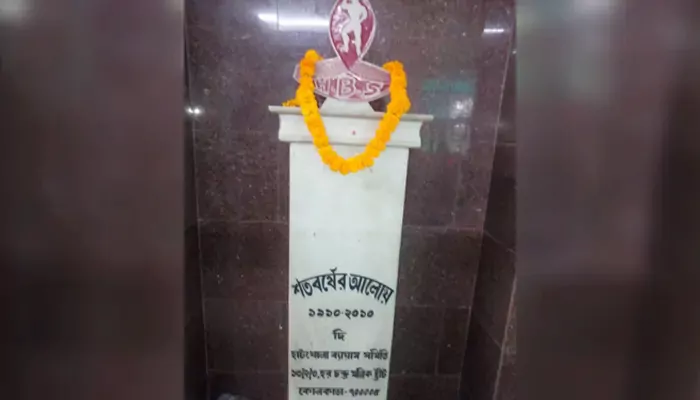
Hatkhola Byayam Samity is Kolkata's oldest gymnasium, which once served as a place for revolutionary activities.
In the early 20th century, Calcutta became much more than just a city of poets and politics. All over the city, young men were building their bodies and sharpening their minds, getting ready to take on the British. And across neighborhoods, small gymnasiums began popping up, serving as hotspots for revolutionary activities. If you’ve read Sharadindu Bandopadhyay’s Byomkesh story 'Rakter Dag', you’ll remember one such gym tucked away in the plot. These (known as akharas in Bengali) became so influential that the British grew uneasy. Many were shut down, raided, or dismantled in fear of what they were nurturing. Some, however, survived. One of them, founded by freedom fighters exactly 115 years ago, still stands tall in the city today. Step inside once and you’ll find history sweating through its walls, and feel a spirit that refuses to die.
As India gets ready to celebrate its 79th Independence Day, let’s take you on a virtual visit to Hatkhola Byayam Samity, a gym with a revolutionary past.
Hatkhola Byayam Samity doesn’t stand out at first glance. Set on a stretch of Hara Chandra Mullick St (Sovabazar, North Kolkata), you could easily walk past it without knowing what lies inside. But once you step through the entrance, you’re in another world. This building once served as a safe space for young men who were getting ready to take on the British Empire. Not far from College Street or Presidency College, and close to old meeting spots like the Paramount Sherbet shop, it sat right at the heart of Calcutta’s political and intellectual activity. That made it the perfect cover; close enough to keep an eye on everything, but never drawing too much attention.

The gym came up in 1910, a time when the British crackdown on nationalist activity in Bengal was getting more intense after the partition of 1905. A group of young men decided to open what looked like a regular fitness club. But this wasn’t only about staying fit. Behind the weight training and wrestling sessions, there was something bigger brewing.
Inspired by the Anushilan Samiti, which believed that physical strength was essential for revolution, the gym became a hotspot for freedom fighters. Leaders like Aurobindo Ghosh and Barindra Kumar Ghosh had already sown the seeds for this idea through their writings. Hatkhola took that philosophy forward.
The aim was to prepare, not just to stay healthy, but to be ready for risky operations. Wrestling matches, hand-to-hand combat, and strength training were part of the activities here.
Gyms like this didn’t go unnoticed for long. British Intelligence officers started referring to them as “centres of sedition,” and they weren’t far off.
According to historian Tuhin Shubra Bhattacharyya, in his book 'Kolkataye Agnijuger Biplabider Gopon Astana', colonial reports from around 1910 flagged several North Calcutta akharas, including Hatkhola, as suspicious. They believed that these were places where radical literature was passed around and secret meetings were held.
One of the most dramatic crackdowns came in 1911, when police raided a gym in Maniktala and discovered a bomb-making unit. Though Hatkhola itself was never officially raided, its address was dangerously close to key Anushilan Samiti hideouts. British spies kept a close eye on it. One officer reportedly complained, “These wrestlers aren’t just exercising; they’re plotting.”

The spirit of Hatkhola has been passed down like family folklore. In a 2019 Indian Express interview, Asit Saha, a former national-level wrestler, spoke about how his grandfather trained at Hatkhola in the 1920s. “He didn’t just teach us moves,” Saha recalled, adding, “He taught us to love our country with strength, not just slogans.”
In another story, shared in The Telegraph in 2023, Arindam Bose, now in his sixties, remembered how his great-uncle, Haren Bose, used to train here. Haren was a member of the Anushilan Samiti, and to the family, Hatkhola was where courage was shaped. “He used to say every time you lift your body off the ground, you’re lifting your country a little closer to freedom,” Arindam said.

These are the kind of stories that rarely make it to textbooks but live on.
If you visit Hatkhola today, don’t expect flashy equipment or air conditioning. The gym has stayed more or less the same since it began. There’s a mud floor, wooden clubs (mugurs), heavy stone weights (nals), and the same training routines that freedom fighters once followed.
And that’s by choice. The trainers here believe in the old ways, not just out of nostalgia, but because they work. In a 2021 Times of India piece, veteran coach Gopal Das put it simply: “Machines can’t teach you control. The mud teaches you how to fall and get back up. The wood builds your grip. This is real strength.”
There’s no sound system, and no mirrors on the wall - just the thud of feet on the ground, the slap of bodies during wrestling bouts, and the discipline that hasn’t changed in over a century.
However, Hatkhola Byayam Samity is very much alive. Every morning and evening, the gym fills with teenagers learning the basics, elderly men continuing a lifelong routine, and some just visiting out of respect for its legacy.
(Credit: _duttababu)
The annual kushti (wrestling) tournaments, the gatherings, and the little ceremonies serve as reminders of what this place once stood for, and what it still means to those who come here.
India’s freedom struggle was shaped not only by famous names but by countless others who never made it into history books. Hatkhola was a training ground for many of them. Haren Bose, mentioned earlier, was one such man. So was Pulin Behari Das, a revolutionary from Dhaka who trained in similar akharas and later led one of the most daring arms raids of the time. Even Kanailal Dutta, who was executed in 1908 for assassinating a British informant inside Alipore Jail, is believed to have trained in traditional gyms around Kolkata.